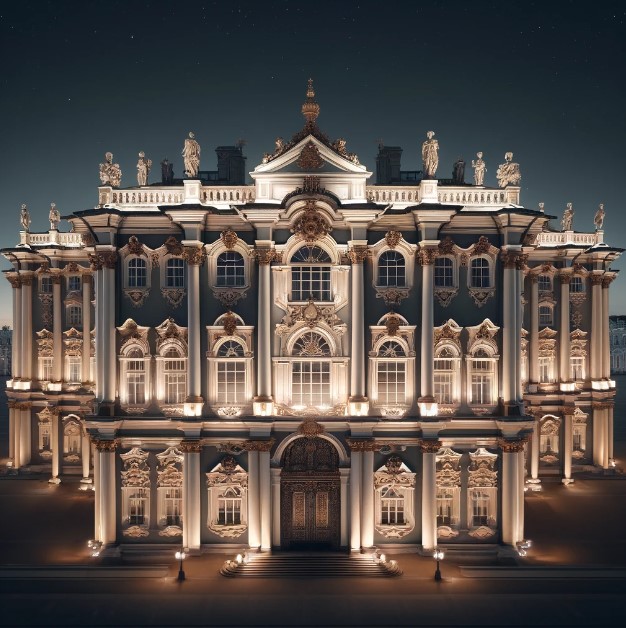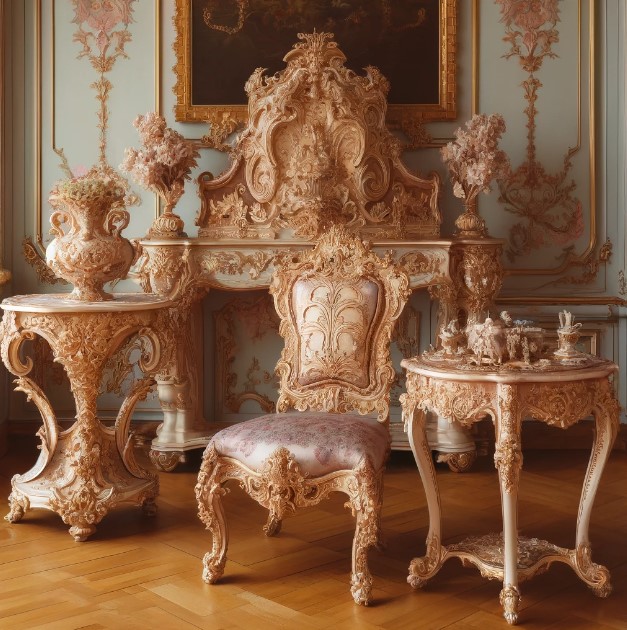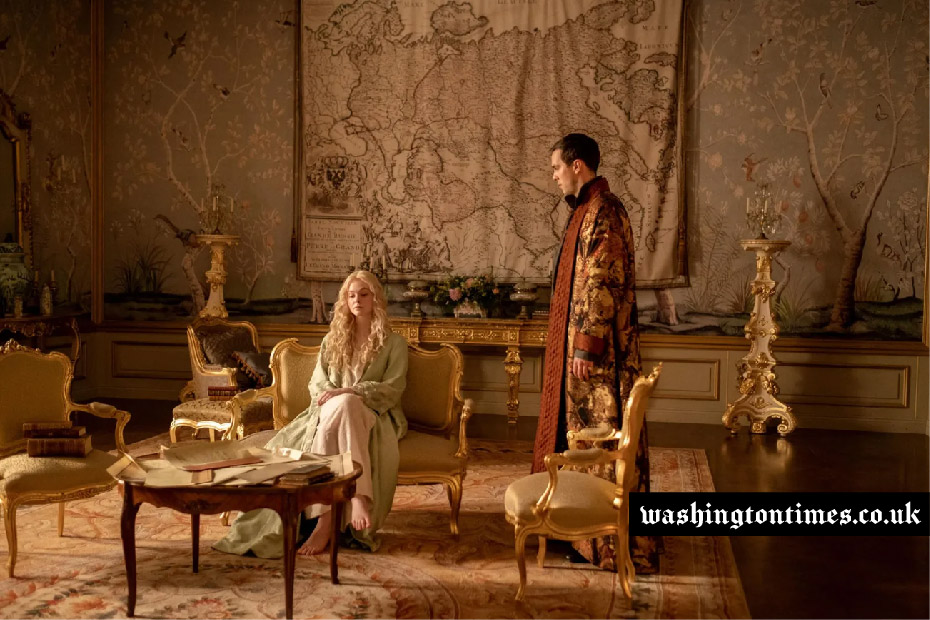Catherine the Great, the renowned empress of Russia from 1762 to 1796, is celebrated for her extensive contributions to the cultural and intellectual flourishing of the Russian Empire. Her influence extended far beyond politics and reforms, permeating the arts, architecture, and interior design. One of the most fascinating aspects of her legacy is the opulent and exquisitely crafted furniture that adorned her many palaces. This article delves into the timeless elegance of Catherine the Great’s furniture, exploring its unique features, historical significance, and the artistic mastery it embodies. The legacy of her furniture is not just a testament to her personal taste but also a reflection of the era’s artistic trends and the empress’s vision for Russia’s cultural advancement.
The Grandeur of Catherine the Great’s Palaces
Catherine the Great’s reign was marked by the construction and renovation of several magnificent palaces, each adorned with furniture that showcased her refined taste and passion for the arts. The Winter Palace, the Catherine Palace, and the Peterhof Palace are just a few examples of her grand residences. Each room within these palaces was meticulously designed and furnished to reflect the empress’s love for opulence and sophistication. The furniture, often custom-made by the most skilled artisans of the time, was a blend of functionality and artistry, featuring intricate carvings, gilded accents, and luxurious fabrics.

The rooms of these palaces were designed to impress and entertain the empress’s guests, including foreign dignitaries, nobility, and intellectuals. Each piece of furniture was carefully selected or commissioned to fit the aesthetic and functional needs of the space. For instance, the Malachite Room in the Winter Palace, known for its extensive use of the precious green stone, featured furniture that complemented its luxurious decor. The careful curation of furniture in these rooms not only served practical purposes but also showcased Catherine’s commitment to elevating Russian cultural standards.
Artistic Influences and Styles
Catherine the Great’s furniture was heavily influenced by the artistic movements of her time, particularly the Rococo and Neoclassical styles. Rococo, with its emphasis on elaborate ornamentation, asymmetrical designs, and pastel colors, was popular in the early years of her reign. This style is evident in the ornate chairs, tables, and cabinets that featured delicate carvings of flowers, leaves, and shells. Gilded accents and painted panels added to the overall sense of luxury and elegance.

As the Neoclassical style gained prominence in the latter half of the 18th century, Catherine’s taste in furniture evolved to reflect this shift. Neoclassical furniture is characterized by its clean lines, symmetrical shapes, and motifs inspired by classical antiquity, such as columns, laurel wreaths, and mythological figures. The empress was particularly fond of this style, as it aligned with her admiration for the classical cultures of Greece and Rome. The Neoclassical furniture in her palaces often featured rich mahogany, satinwood, and intricate marquetry, creating a harmonious blend of grandeur and simplicity.
Masterpieces of Catherine the Great’s Furniture Collection
Among the numerous masterpieces that adorned Catherine the Great’s palaces, several pieces stand out for their exceptional craftsmanship and historical significance. One such piece is the famous knife that belonged to the empress, which was not only a functional item but also a work of art. The knife featured an intricately carved handle made of ivory, adorned with gold and precious stones. It exemplified the attention to detail and the high level of artistry that characterized much of the furniture and decorative items from her collection.

Another notable example is the collection of furniture in the Green Drawing Room of the Catherine Palace. This room, designed in the Neoclassical style, featured exquisite pieces such as gilded chairs with silk upholstery, elaborately carved wooden tables, and ornate chandeliers. The harmonious arrangement of these pieces created a space that was both visually stunning and comfortable, reflecting the empress’s desire to combine beauty with practicality.
The Amber Room, located in the Catherine Palace, is perhaps one of the most famous examples of the opulence that defined Catherine the Great’s furniture legacy. Originally created for Peter the Great, it was expanded and embellished under Catherine’s reign. The room’s walls were covered with panels of amber, gold leaf, and mirrors, creating a breathtaking effect. The furniture in this room, including the intricate desks and cabinets, was designed to complement the amber’s warm glow, resulting in a space that epitomized luxury and artistic brilliance.

Preservation and Legacy
The preservation of Catherine the Great’s furniture has been a priority for historians and curators, as these pieces are invaluable artifacts of Russian history and culture. Many of the original pieces have been carefully restored and are on display in museums and palaces, allowing visitors to appreciate their beauty and craftsmanship. Photographs and detailed records of these items have also been preserved, providing valuable insights into the design and construction techniques of the era.
In recent years, there has been a growing interest in Catherine the Great’s furniture, with exhibitions and scholarly research shedding new light on her contributions to the decorative arts. High-quality reproductions of her furniture are also popular among collectors and enthusiasts, ensuring that her legacy continues to inspire and captivate audiences around the world.
The influence of Catherine the Great’s furniture extends beyond its historical and artistic significance. It serves as a reminder of the empress’s vision for Russia—a vision that embraced cultural exchange, artistic innovation, and a deep appreciation for beauty. Her patronage of the arts and commitment to fostering talent helped to elevate Russian craftsmanship to new heights, leaving an indelible mark on the country’s cultural heritage.
Conclusion
Catherine the Great’s exquisite furniture legacy is a testament to her sophisticated taste, her support for the arts, and her vision for a culturally enriched Russia. The furniture that graced her palaces not only served practical purposes but also embodied the artistic trends and cultural values of her time. From the intricate carvings and gilded accents of the Rococo style to the clean lines and classical motifs of Neoclassicism, each piece reflected the empress’s commitment to beauty and craftsmanship. Today, the preservation and study of these masterpieces continue to offer valuable insights into the artistic achievements of Catherine the Great’s reign, ensuring that her legacy of timeless elegance endures.

This legacy, encapsulated in the magnificent pieces that have survived through the centuries, remains a source of inspiration and admiration for historians, art lovers, and anyone who appreciates the finer things in life. Catherine the Great’s furniture is not merely a collection of objects; it is a reflection of a remarkable era and the enduring impact of one of history’s most influential rulers.


